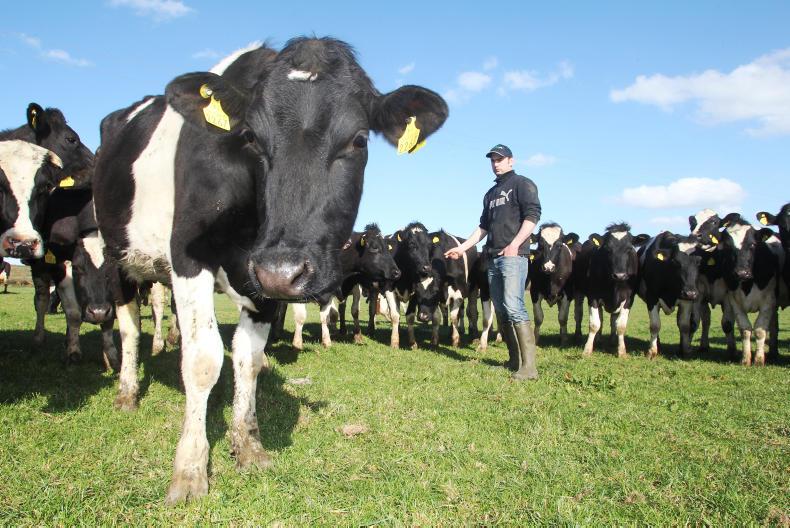We have just finished the first three weeks of breeding and, at 89%, we are just under our target of 90% of the herd submitted for AI. We should still catch a few more on longer cycles over the next few days. Most of the other 10% have small problems like late calving, feet problems and we also have some older cows. A few were obviously missed in the first three weeks, so hopefully we will catch them on the next cycle.
We will examine all these cows over the next week and see if we can get them cycling and served with as little intervention as possible. We will probably get a few more repeats than usual this week, as we see the cows served with sexed semen are due to come around again. If we can catch them this week, we will still have them calving in February.
We will leave the Friesian bulls in for another cycle, but join some batches together and introduce beef bulls alongside the Friesians in the larger groups
After this week, things should settle down on the breeding front and hopefully with the good weather, we will see a high percentage holding to the first service. We will use a bit more beef semen through this breeding cycle, before switching to beef stock bulls for the last month of the breeding season.
The heifers will be finished the first three weeks with the Friesian bulls this week. We will leave the Friesian bulls in for another cycle, but join some batches together and introduce beef bulls alongside the Friesians in the larger groups. We will hold a few beef bulls back and keep them fresh for work with the cows in June.
It’s all Angus and Aubrac beef bulls this year, with both heifers and cows. We have nine of these bulls in total, so hopefully we have enough bull power to get everything done and they don’t get too many injuries during the season. Most of the calves arrived easily enough this spring, so we will stick to a similar plan for the coming season.
Silage
We will turn our thoughts to silage next week. The main crop will be ready for ensiling by the middle of the month, with some bales needed either side of that, to split the aftergrass coming back as much as anything. It might give us a better opportunity to split slurry applications on the aftergrass as well.
In true Irish fashion, we will probably get all the rain now through the silage season, so we might try to grab some wraps early in case the main crop gets delayed
We have been a little short of rain over the past month, with only 32mm of rain falling in April and half of that total falling on the fifth, so grass growth has been mixed enough through the month. Silage ground with a cover of grass is holding on to the small amounts of rain that are falling and growing well, but grazed paddocks are slow to recover, with sun and wind sucking any moisture out of the ground very quickly.
In true Irish fashion, we will probably get all the rain now through the silage season, so we might try to grab some wraps early in case the main crop gets delayed. We might look at some re-seeding if we get enough rain, but for the moment, conditions are way too dry to even consider it.
Calves
We have most of the heifer calves weaned and out to grass over the last month. They were weaned at 100kg bodyweight and are thriving in the dry grazing conditions since turnout.
We will set up some sort of canteen in a clean shed in the yard for meals with garden tables and chairs
We might throw them some meal if the weather turns, but for the moment they are doing very well on grass only.
The silage season will be a bit different with the COVID-19 restrictions. We will set up some sort of canteen in a clean shed in the yard for meals with garden tables and chairs.
We can collect meals from a restaurant or take-away, use disposable cups and plates and hopefully keep everyone well fed and safe through the restrictions.






 This is a subscriber-only article
This is a subscriber-only article










SHARING OPTIONS: